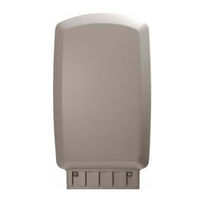Belair BELAIR100 Manuals
Manuals and User Guides for Belair BELAIR100. We have 1 Belair BELAIR100 manual available for free PDF download: User Manual
Belair BELAIR100 User Manual (147 pages)
Brand: Belair
|
Category: Wireless Router
|
Size: 1 MB
Table of Contents
-
-
-
-
-
-
-
-
-
-
-
-
-
-
-
Troubleshooting113
-
Using SYSLOG121
-
-
-
-
Detailed
139
Advertisement
